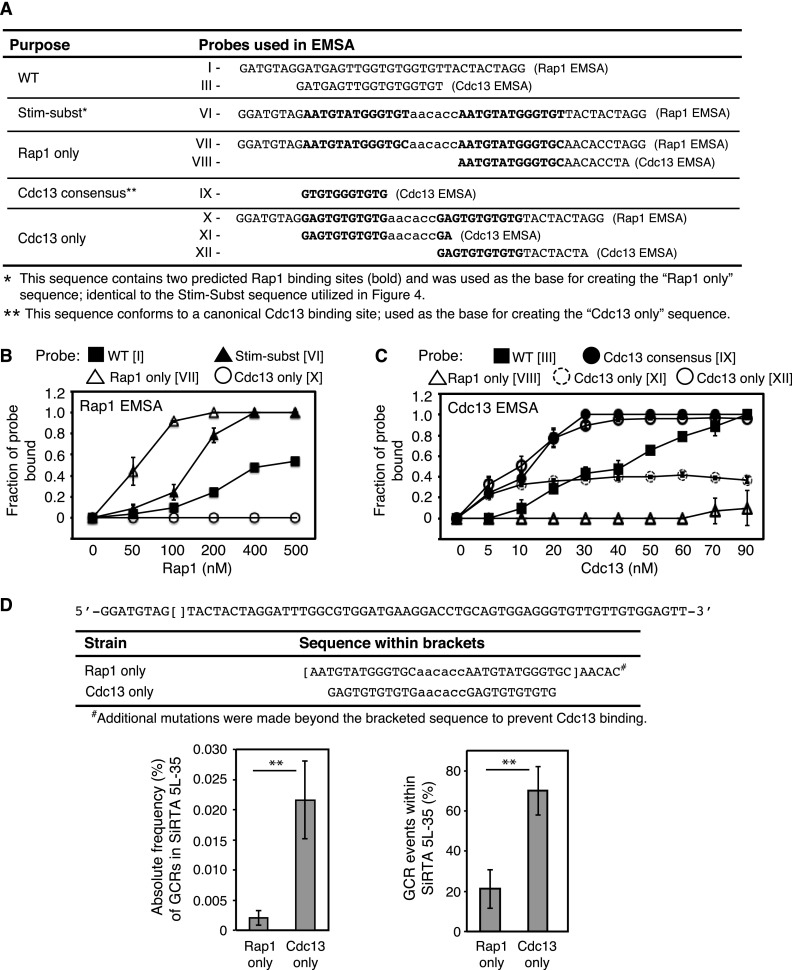FIG 5.
The rate of de novo telomere addition at SiRTA 5L-35 correlates with the ability of the SiRTA Stim sequence to bind Cdc13. (A) Probes utilized for Cdc13-DBD and Rap1 binding assays. Probes I, III, and VI are identical to those described for Fig. 4. Probes followed by “Rap1 EMSA” are double stranded. Those indicated with “Cdc13 EMSA” are single stranded. (B) Binding of the indicated concentration of recombinant Rap1 to double-stranded probes shown in panel A. (C) Binding of the indicated concentration of recombinant Cdc13-DBD to single-stranded probes shown in panel A. In panels B and C, the average fraction of probe bound was determined from three independent experiments. Error bars represent standard deviations. (D) The SiRTA 5L-35 Stim sequence (indicated by brackets) was replaced at the endogenous locus on chromosome V with the sequences depicted here. Average results and standard deviations for three HO cleavage assays are shown as absolute frequency (%) of GCR formation within SiRTA 5L-35 (left graph) or percentage of total GCR events within SiRTA 5L-35 (right graph). Averages indicated with 2 asterisks are significantly different (P < 0.01) by unpaired Student's t test.

